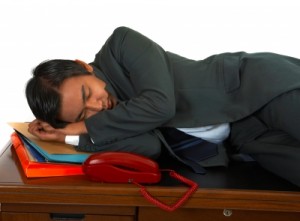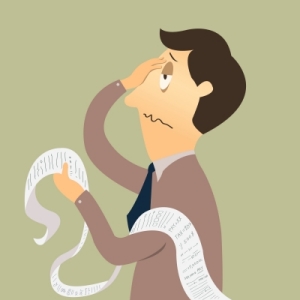Creating Healthy Sleep Patterns

Getting enough sleep can do amazing things to our well-being. We feel more rested, energised, healthy, balanced and more satisfied with life. However, when we struggle to get enough sleep, this can effect everything! Our feelings of tension, depression, anger, fatigue, and confusion all increase. At times it can even feel like life is such a massive struggle (Pilcher, Ginter & Sadowsky, 1997).
Creating a healthy sleeping pattern can be a great way to begin to combat issues around consistently disrupted sleep and help increase our well-being.
Below is a list of suggestions to help encourage a healthy sleeping pattern:
1. Sleep only as much as you need to feel refreshed during the following day. Restricting your time in bed helps to deepen your sleep. Excessively long times in bed lead to fragmented and shallow sleep. Get up at your regular time the next day, no matter how little you slept.
2. Get up at the same time each day, 7 days a week. A regular wake time in the morning leads to regular times of sleep onset, and helps to set your ‘biological clock’.
3. Exercises regularly. Schedule exercise times so that they do not occur within three house of when you intend to go to bed. Exercise makes it easier to get to sleep and sleep deeply.
4. Make sure your bedroom is comfortable and free from light and noise.
5. Make sure that your bedroom is at a comfortable temperature during the night.
6. Eat regular meals and do not go to bed hungry. A light snack at bedtime (especially carbohydrates) may help sleep, but avoid greasy or heavy foods.
7. Avoid excessive liquid consumption in the evenings.
8. Cut down on all caffeinated products. Caffeinated beverages and foods (coffee, tea, cola, chocolate etc.) can cause difficulty falling asleep, awakening during the night and shallow sleep. Even caffeine early in the day can disrupt night time sleep.
9. Avoid alcohol.
10. Smoking may disrupt sleep. Nicotine is a stimulant. Try not to smoke during the night when you have trouble falling asleep.
11. Don’t take your problems to bed. Plan some time earlier in the evening for working on your problems or planning the next day’s activities. Worrying may interfere with initiating sleep and produce shallow sleep.
12. Train yourself to use the bedroom only for sleeping. This will help condition your brain to see bed as the place for sleeping. Not to read, watch TV or eat in bed.
13. Do not TRY to fall asleep. This only makes the problem worse. Instead, turn on the light, leave the bedroom, and do something different like reading a book. Don’t engaged in stimulating activity. Return to bed only when you are sleepy.
14. Put the clock under the bed, or turn it so that you can’t see it. Clock watching may lead to frustration, anger and work which will interfere with sleep.
15. Avoid naps. Staying awake during the day helps you to fall asleep at night.
If sleep disturbances continue, please contact your Doctor or GP for more information on other options to help create healthy sleep patterns.
Reference:
Pilcher, J .J, Ginter, D. R. & Sadowsky, B. (1997). Sleep quality versus sleep quantity: Relationships
between sleep measures of health, well-being & sleepiness in college students. Journal of
Psychosomatic Research, 42(6), 583-596.
 prepare our mind and body to respond to threat or danger. Our attention becomes focused on figuring out the fastest possible escape route, while the rush of adrenaline into the blood stream enables us to run (or react) faster. In other words, we try to escape the threat both mentally and physically, which is helpful in a dangerous or life threatening situation.
prepare our mind and body to respond to threat or danger. Our attention becomes focused on figuring out the fastest possible escape route, while the rush of adrenaline into the blood stream enables us to run (or react) faster. In other words, we try to escape the threat both mentally and physically, which is helpful in a dangerous or life threatening situation. Therapy does not need to be limited to an office based environment. At Shore Therapy we are able to offer Skype sessions at no additional charge either in addition to your normal office based sessions, or we can have sessions exclusively via Skype.
Therapy does not need to be limited to an office based environment. At Shore Therapy we are able to offer Skype sessions at no additional charge either in addition to your normal office based sessions, or we can have sessions exclusively via Skype. Equine Assisted Psychotherapy is a form of therapy that uses interactions with horses to encourage emotional growth and learning. This means that clients learn about themselves and others by participating in activities with the horses and then process their thoughts, beliefs, behaviours and patterns. This approach is based on the idea that clients have their own answers and that they have the ability to overcome their struggles and find healthier solutions when encouraged and given the opportunity. Equine Psychotherapy is a collaborative therapy, where the client, a therapist and a horse specialist all work together. The horse therapist is someone who has spent a number of years working with horses and is well accustomed to identifying horse behaviour. This is so that safety for all involved is a number one priority.
Equine Assisted Psychotherapy is a form of therapy that uses interactions with horses to encourage emotional growth and learning. This means that clients learn about themselves and others by participating in activities with the horses and then process their thoughts, beliefs, behaviours and patterns. This approach is based on the idea that clients have their own answers and that they have the ability to overcome their struggles and find healthier solutions when encouraged and given the opportunity. Equine Psychotherapy is a collaborative therapy, where the client, a therapist and a horse specialist all work together. The horse therapist is someone who has spent a number of years working with horses and is well accustomed to identifying horse behaviour. This is so that safety for all involved is a number one priority.